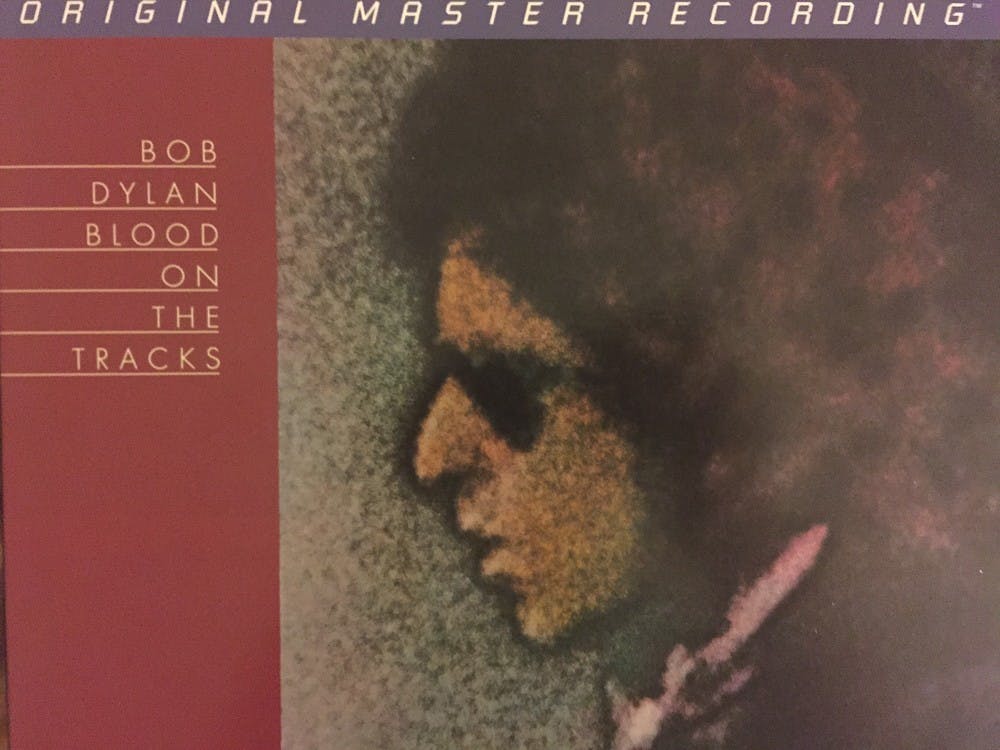To call one of Bob Dylan’s albums one of the best is the same as ranking it amongst the best in music history. Few will debate his importance and stature as an American treasure. With five decades of relevance under his belt, Dylan is an anomaly of songwriting talent — few, if any, can compete.
Endless accounts of Dylan’s life and career exist, and a man like him deserves to have his tale told. But let's skip the bloated adoration and begin discussing why “Blood on the Tracks” resonates with so many fans as his best album.
These are my favorite tracks from Bob Dylan’s breakup classic, etched onto freshly cleaned, virgin black vinyl, of course.
1. “Tangled Up in Blue”
Dylan was never recognized as a confessional singer. He always embodied the minds of characters, using metaphors and allegory to approach politics and societal pitfalls with his iconic snarl. It’s part of what makes Dylan’s music so special.
“Blood on the Tracks” is a deviation from his usual separation. Although Dylan has denied the autobiographical nature of the songs, his well-documented separation from his then-wife Sara serves perfectly as dressing for the album’s subjects.
The way “Tangled Up in Blue” bounds between geographical locations and eras plays into the typical Dylan characterization. He probably never worked “as a cook for a spell” or “for a while on a fishin’ boat.” It’s quotes like these that almost prove Dylan wasn’t singing about himself.
Nevertheless, a history lesson in Dylan’s life shows that he had been estranged from his wife and son during the album’s recording. Knowing this makes lyrics like “So now I’m goin’ back again / I got to get to her somehow” and “I don’t know what they’re doin’ with their lives / But me, I’m still on the road” almost painfully evident in their subject matter.
Either way, the song works on many levels. Personal confession or not, a song about falling astray from a lover is applicable for many people — especially when it’s written this well.
2. “Idiot Wind”
Although by 1975 his fame had faded a bit, Dylan’s monumental work in the '60s meant he would never escape the deceit and diatribe from tabloid media. “Idiot Wind” plays like reverse criticism on both those who write the nonsensical stories and read them as truth.
Tongue in cheek, Dylan briefly tells a fake story about shooting a man named Gray and stealing his wife. Obviously this didn’t happen, but his sarcasm mimics the phony headlines purposefully.
Dylan has choice words for the morons who buy into the stories.
“People see me all the time and they just can’t remember how to act,” Dylan sings. “Their minds filled with big ideas, images and distorted facts.”
The second half of “Idiot Wind” harkens back to Dylan’s failing marriage. He dreads being around his wife, constantly “wishing (he) was somebody else instead.” The entire addressing of his wife is riddled with harsh and depressed accounts of his fading love.
Again, although Dylan denies it, there’s something uncannily confessional about “Idiot Wind.”
3. “Shelter from the Storm”
Part of the magic of “Blood on the Tracks” is how each song can take a different meaning depending on the person. Like chameleons, Dylan’s lyrics straddle a line between vagueness and specificity that blows the whole album open to interpretation.
To me, “Shelter from the Storm” is about finding peace in the arms of a woman. As Dylan was “burned out from exhaustion” like a “creature void of form,” his only consolation was his wife offering asylum from the insanity of fame and fortune.
Once more, Dylan’s marriage meanders into turmoil. A wall forms between them as miscommunication and fighting shows they had taken each other for granted.
Perhaps I’m taking too much liberty with my perception of “Blood on the Tracks.” Perhaps I’m wrong and Dylan never wrote about his foiled marriage on paper. Either way, poetry is often meant to be left in the hands of readers. We are supposed to apply our own interpretations, especially if it adds a personal profoundness.
So while self-professed experts endlessly debate “Blood on the Track’s” true meaning, I implore you to find your own significance within its intricacies and hold it dear to your heart. All great art deserves as much and so do you.
Tell the reporter about your vinyl collection at nlatona@asu.edu or follow @Bigtonemeaty on Twitter.
Like The State Press on Facebook and follow @statepress on Twitter.




